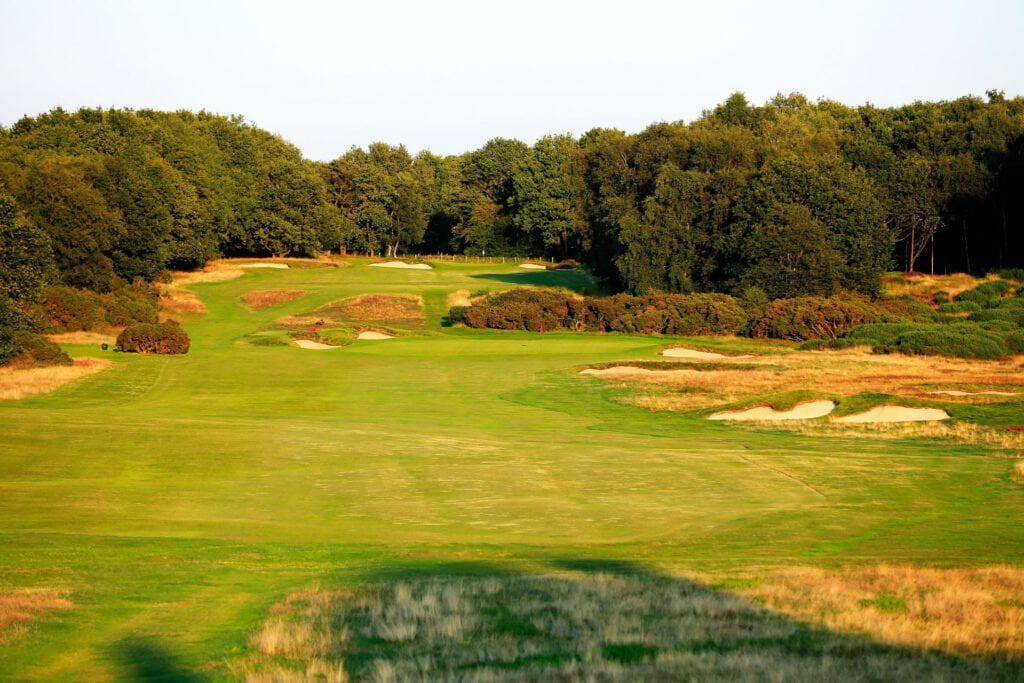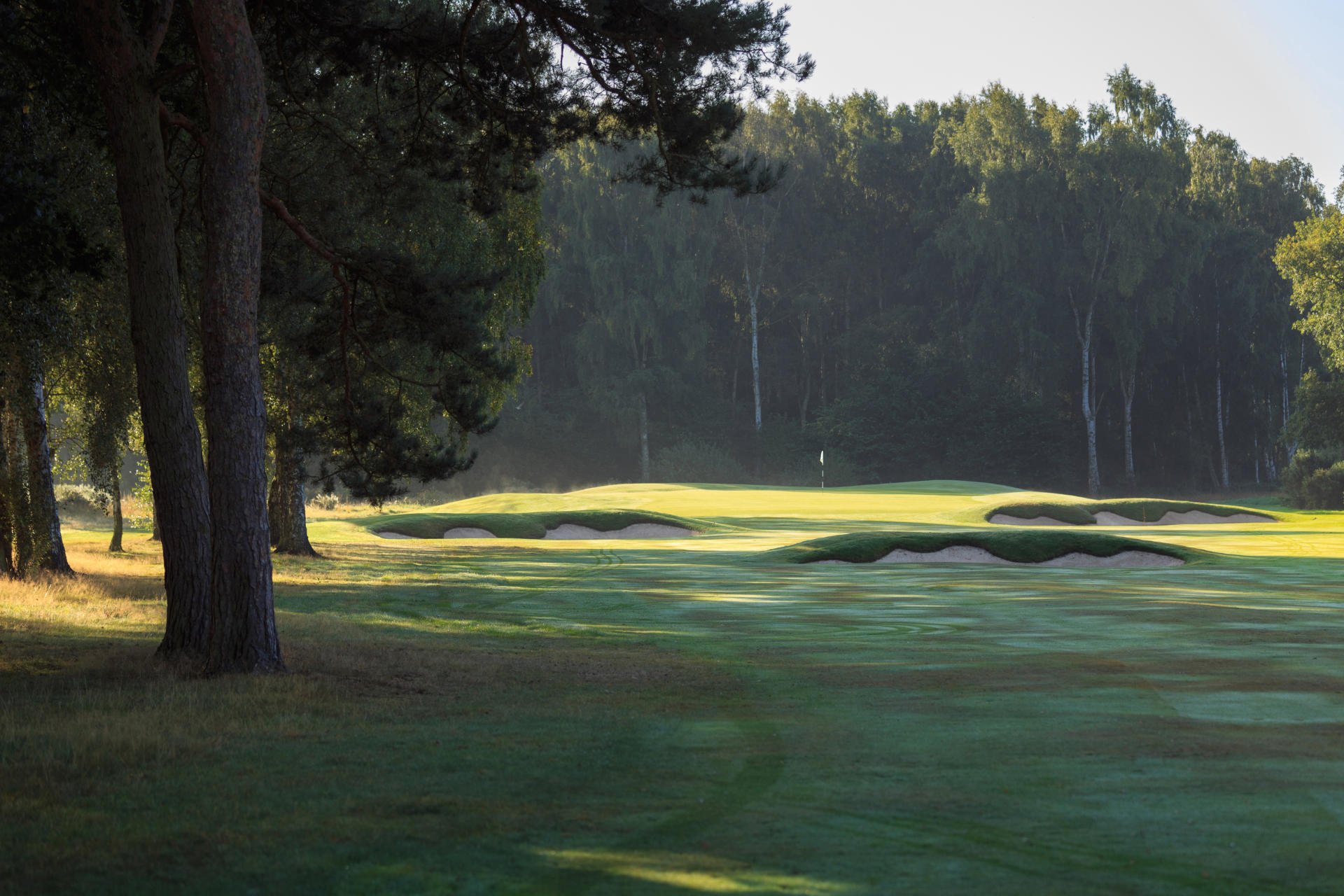A chance to play two of England's finest inland courses including GSGB's first visit to Fulford.
The Alwoodley Golf Club is the cream of a cluster of excellent courses stretching across the moors just north of Leeds and currently sits at #41 in the GB&I Top100golfcourses.com rankings. In many ways, it is reminiscent of the world-class heathland at Woodhall Spa’s Hotchkin course which is very high praise indeed. “This the home course of Dr. MacKenzie ought to be good and, personally, I put it very high among inland courses,” wrote Bernard Darwin in his book The Golf Courses of Great Britain.
Founded in 1907, MacKenzie joined forces with the already renowned architect, Harry Colt, to fashion Alwoodley and this was his first dabble with golf course design. Clearly inspired, he went on to become a full time golf course architect and later went on to design the great Augusta National, home of the Masters.
The course is a combination of heathland and moorland with rippling fairways and fine, crisp, springy turf. There is plenty of heather and gorse, which provides glorious seasonal colour and it will usually punish the wayward shot. Essentially an out and back course, the front nine is generally regarded as the easier of the two nines (the only two par fives are on the outward nine). The back nine invariably plays into the prevailing winds coming off the Yorkshire Moors.
Alwoodley possesses some strong and supremely challenging holes. The 3rd is a very subtle straight par five measuring 510 yards and it used to appear open and devoid of definition. However, in recent years the club has implemented a policy of restoration and improvement of all the bunkers on the course. This has changed the playing characteristics of some holes, including the 3rd. The once lonesome bunker on the lefthand side of the fairway, some 200 yards from the tee, has been joined by a further left-side bunker, 240 yards out, which complements the original one. A new bunker 30 yards short and right of the green narrows the approach, demanding a very accurate shot to the right-to-left sloping green.

The short 9th and 11th are two exquisite par threes and between them, the doglegging 10th requires an accurate downhill approach shot to a wonderful green complex fronted by a troublesome ditch. The 17th is one of our favourite driving holes if you can avoid the out-of-bounds on the left. It’s a 434-yard par four where a reasonable tee shot will leave a blind approach to a hidden green nestling some 30 feet below. The raised tee on the tough 18th offers a fine view of the unique chateau-style clubhouse.
Alwoodley has played host to many important amateur events over the years and it regularly tests the pros when the course is used as a Regional Qualifier for the Open.
The club was founded in 1906 but it moved to its current site in 1935 after James Braid identified the land a few years earlier. Major Charles MacKenzie, the brother of the legendary Alister MacKenzie of Augusta National fame, designed the course on predominantly sandy ground. A major bunker renovation, recently completed by top golf course architects Mackenzie & Ebert has made the course even better.
The course lies on flat land, the early holes being of a fast-running parkland nature as it heads away from the clubhouse towards the A64 that dissects the course into two distinct parts. Cross the road and you enter a more wooded setting with a touch of heathland about it before re-crossing the road and playing the final five holes parallel to the opening stretch. After a very solid start, which includes the excellent par-three third, the eight holes across the bridge showcase the best of Fulford. There are three superb par fives amongst this stretch of holes, that change direction often, as well as a number of excellent par fours (the tough 13th is undoubtedly the most noteworthy) and a fine one-shotter at the tenth.
Being in play from the tee is of paramount importance, however, your task is not an easy one because there are several very well placed bunkers at various lengths from the tee. Many of the holes are also lined by trees and/or gorse making the course play even narrower.

There is one particular tree at Fulford that will remain a monument to Bernhard Langer for as long as it lives. In the 1981 B&H International, Langer hit his approach shot to the 17th into the branches of a large ash tree. Amazingly, the ball remained lodged. Rather than taking a penalty drop, Langer decided to shin up the tree and play the shot from where it lay. From a precarious and unusual stance, Langer chipped out and to everyone’s astonishment, the ball landed on the green. A plaque on the same tree now commemorates Langer’s remarkable feat.
Measuring 6,779 yards from the back tees, Fulford is a serious test for the handicap golfer, but the course is too short for today’s long-hitting professionals. Just ask Ian Woosnam. “Woosie” posted the All-Comers’ course record in 1985 with an amazing 62. It is most unlikely that we’ll have the chance to score 62, but we’ll certainly enjoy Fulford. It’s a fine golf course in a beautiful part of the country and, thanks to Langer, it will always be remembered.
